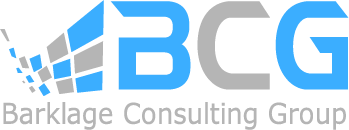Demystifying IT Maintenance: Keeping Your Systems Running Smoothly
In today’s fast-paced digital landscape, information technology (IT) is the backbone of nearly every business and organization. To ensure the seamless operation of IT infrastructure, IT maintenance plays a pivotal role. In this blog post, we’ll dive into what IT maintenance is, why it’s essential, and the different aspects involved in keeping your systems running smoothly.
What is IT Maintenance?
IT maintenance encompasses a set of proactive and reactive activities aimed at ensuring the reliability, performance, and security of an organization’s IT systems, hardware, software, and networks. It involves regularly inspecting, updating, repairing, and optimizing IT assets to prevent downtime, data loss, and security breaches.

Why is IT Maintenance Important?
- Minimizing Downtime: Downtime can be costly in terms of lost productivity and revenue. Regular maintenance helps identify and address issues before they lead to system failures, reducing downtime.
- Security: Cybersecurity threats are constantly evolving. IT maintenance includes updating security software, patching vulnerabilities, and implementing best practices to safeguard sensitive data.
- Performance Optimization: Over time, IT systems can become sluggish or inefficient. Maintenance tasks like cleaning up files, optimizing software, and hardware upgrades can significantly improve system performance.
- Data Integrity: Regular backups, data validation, and storage maintenance ensure data integrity and prevent data loss due to hardware failures or corruption.
Types of IT Maintenance
- Preventive Maintenance: This proactive approach involves scheduled tasks like system updates, hardware inspections, and routine cleaning to prevent potential issues.
- Corrective Maintenance: Reactive in nature, this type of maintenance addresses issues that have already occurred. It includes troubleshooting, repairs, and recovery efforts after system failures.
- Predictive Maintenance: Leveraging data analytics and monitoring tools, predictive maintenance predicts when IT assets are likely to fail. It allows for timely interventions, reducing downtime.
- Adaptive Maintenance: As technology evolves, IT systems must adapt to new software and hardware requirements. Adaptive maintenance ensures that systems remain compatible and effective.
Components of IT Maintenance
- Hardware Maintenance: Regularly inspect and clean physical hardware components like servers, computers, switches, and routers. Replace or upgrade components as needed to prevent hardware failures.
- Software Maintenance: Keep operating systems, applications, and software up to date with the latest patches and updates to address security vulnerabilities and improve performance.
- Network Maintenance: Ensure that your network infrastructure, including routers, switches, and firewalls, is functioning optimally. Regularly review network configurations for security and efficiency.
- Security Maintenance: Implement strong security practices, including firewall management, antivirus updates, and intrusion detection systems, to protect against cyber threats.
- Data Maintenance: Regularly back up data, validate backups, and establish data retention policies to ensure data availability and integrity.
- Documentation: Maintain detailed records of IT assets, configurations, maintenance schedules, and incident reports to aid in troubleshooting and compliance efforts.
Conclusion
IT maintenance is the unsung hero of modern business operations. It ensures that your IT systems run smoothly, securely, and efficiently, allowing your organization to focus on its core objectives. By implementing a comprehensive IT maintenance strategy that includes preventive, corrective, predictive, and adaptive measures, you can mitigate risks, reduce downtime, and maintain the integrity of your IT infrastructure. Remember, IT maintenance is not a one-time task; it’s an ongoing commitment to keeping your technology assets performing at their best.


